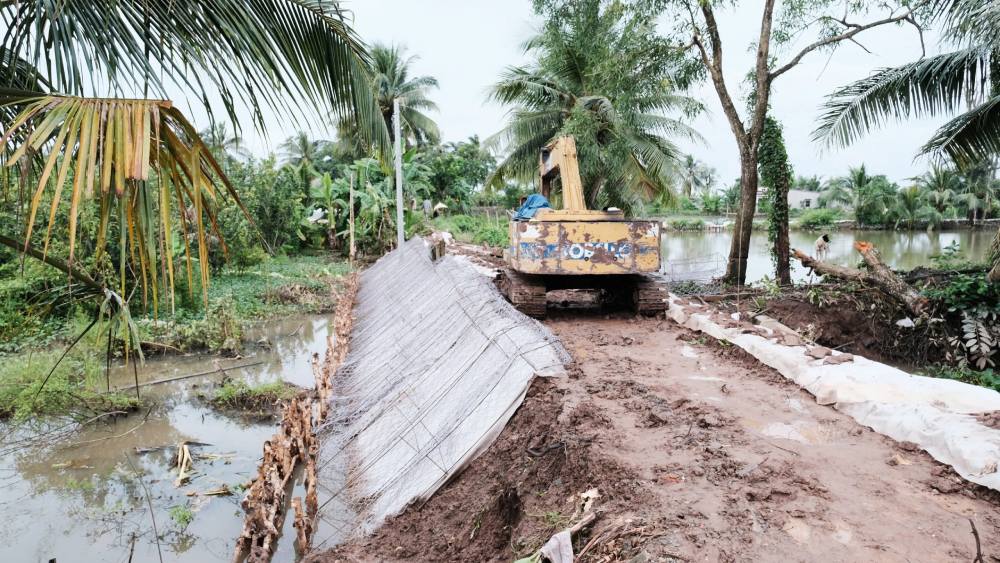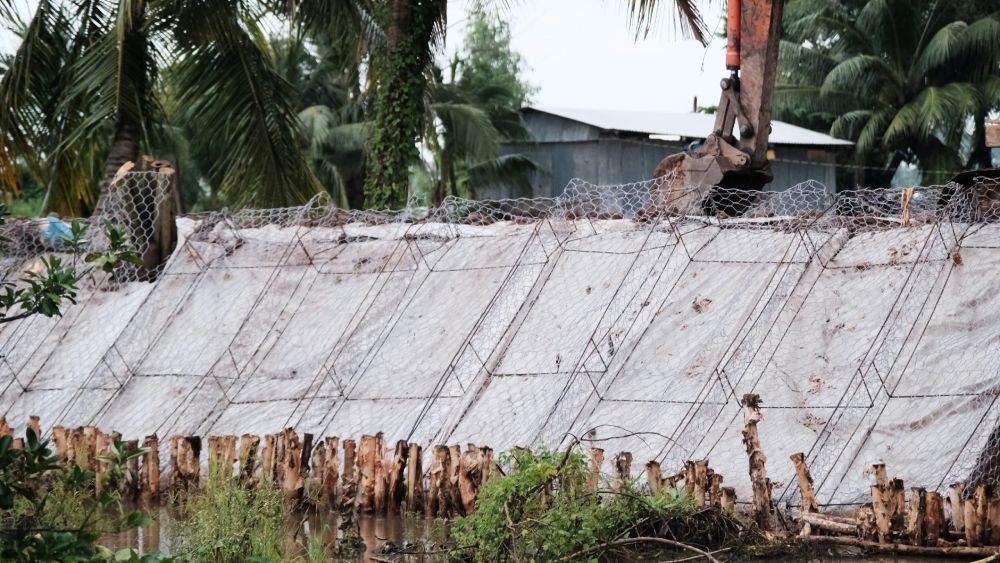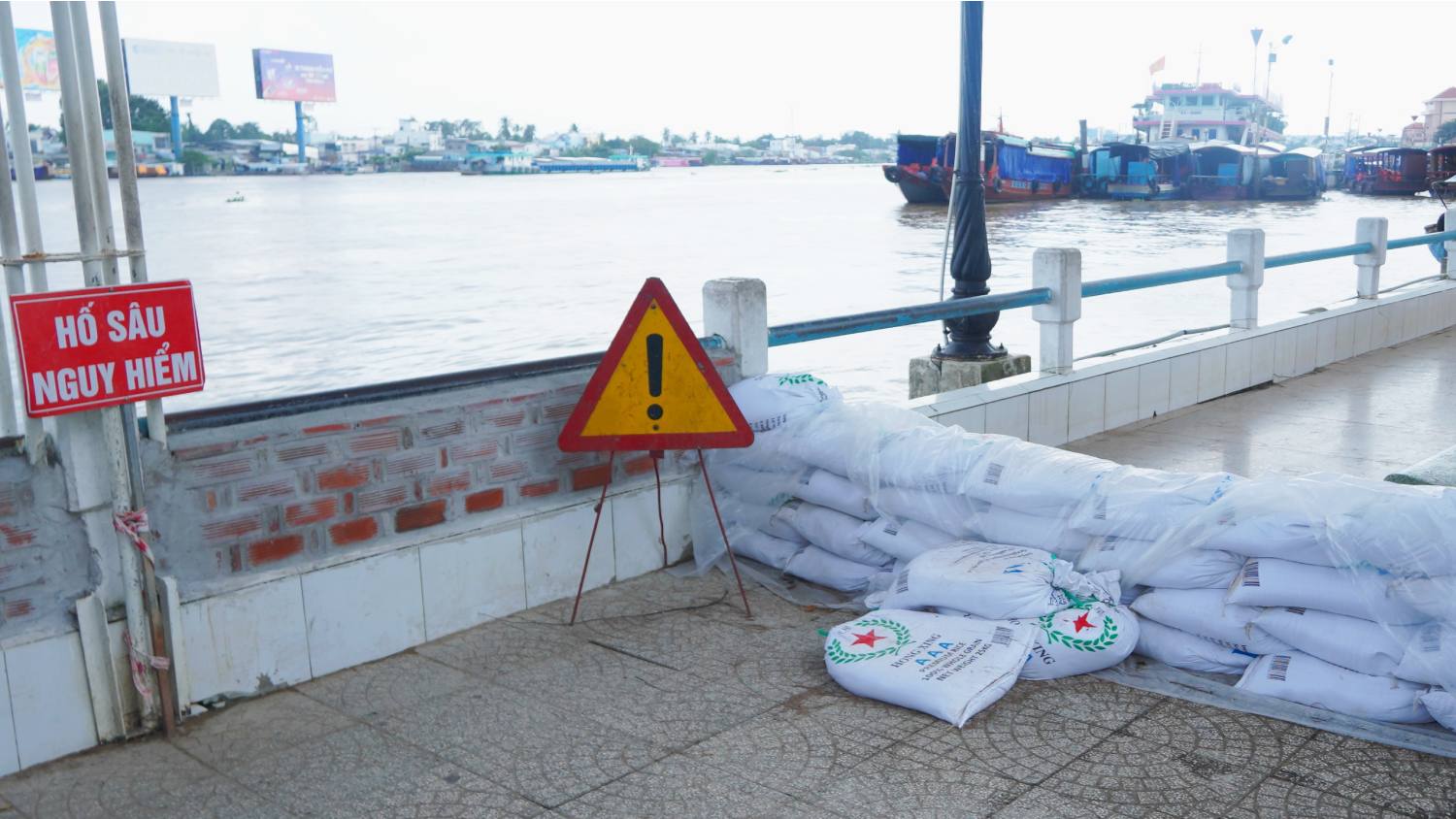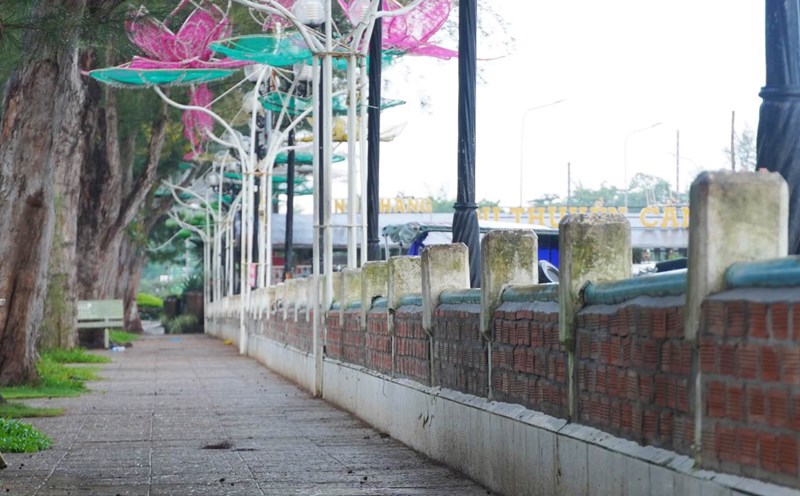Can Tho City has just experienced high tides in September with peaks approaching alert level 3 and high tides in October with peaks exceeding alert level 3; causing the dike line in the canal adjacent to the Hau River to break, floodwaters flooded many houses, fish ponds, and roads, affecting people's lives, activities, and businesses.

According to the Southern Institute of Water Resources Planning, high tides in mid-November will continue to rise in the provinces and cities of the Mekong Delta (MD). In the central region (including Can Tho City), the highest water level in November will commonly occur on November 17-18.
Currently, Can Tho City is implementing many synchronous solutions, identifying the causes of urban flooding, coordinating between units in operating the flood control system, checking and handling damage to dykes, embankments, etc. to ensure production and people's lives when the tide rises.
In particular, at Con Son (Bui Huu Nghia ward, Binh Thuy district) - with the terrain characteristics located in the middle of Hau river, currently, investment has been made to build new dikes and embankments; when completed, it will contribute to flood prevention, landslide prevention, ensuring life as well as tourism business activities, protecting fruit gardens for people on the island.


Particularly in Ninh Kieu district, according to statistics from the district's functional sector, during the flood combined with high tides in October, 13 roads in the area were flooded.
The district authorities have repaired and upgraded the embankment and railing system adjacent to Ninh Kieu Park by building higher rows of bricks and blocking with sandbags. Surveyed the dike systems in Con Khuong, vulnerable areas at risk of landslides and deep flooding, and established investment and reinforcement procedures.


To effectively implement traffic safety work and proactively respond to upcoming high tides, the People's Committee of Can Tho City also requires the management units of the boat locks, sluice systems, tide-prevention valves, and pumping stations to open and close at the right time when the tide rises and falls.
Organize to monitor the development of rain and high tides, inform authorities at all levels and people to proactively respond; continue to organize 24/7 on-duty shifts during high tide days; maintain rescue forces, guide traffic at deeply flooded roads and intersections; strengthen inspection and reinforcement of dikes and embankments to protect fruit orchards and sandbanks on the Hau River;...
According to the warning bulletin of the Institute of Marine Engineering (under the Vietnam Institute of Water Resources), in November, the tidal water level in the Mekong Delta will exceed alert levels 1, 2, and 3 for many days. In particular, from November 16 to 22, most areas will have water levels exceeding alert level 3 (from 0 to 39 cm).
In addition, storms and tropical depressions in the East Sea and affecting the mainland are likely to continue to appear frequently and become more active, combined with high tides that can cause flooding in many places.
Localities in the Mekong Delta region need to pay attention to reinforcing the system of dykes, embankments, and embankments; properly operate irrigation works to prevent flooding according to the warning levels and the level of impact of the storm; and guide people on response measures to minimize damage.











